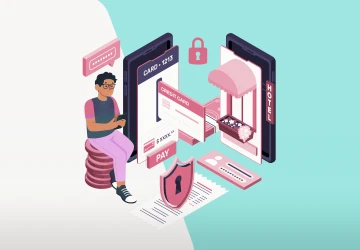Features of Hospitality Websites for Easy Check-Ins
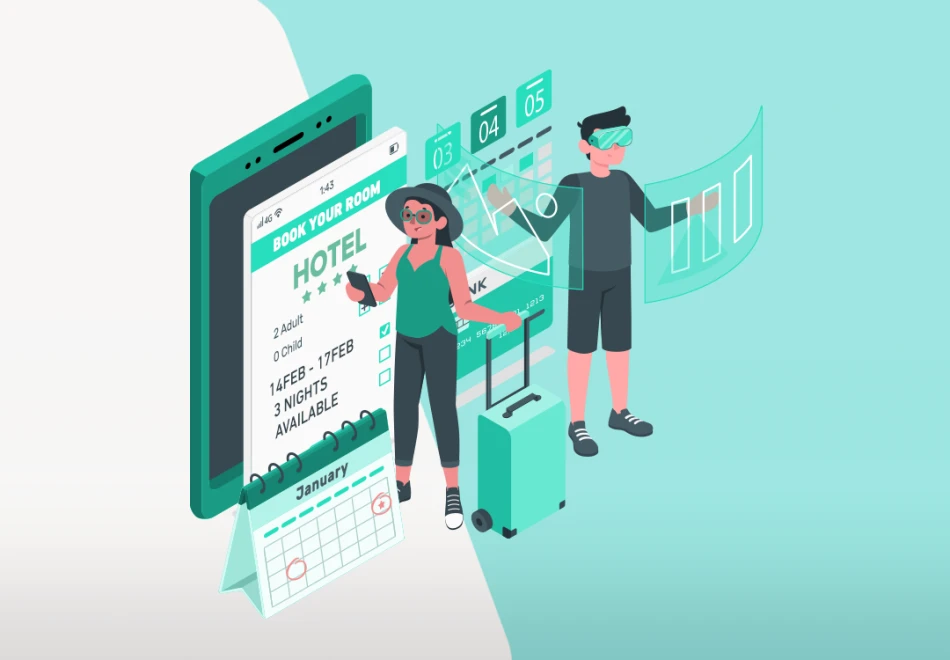
Ever wonder why some hotel websites make you want to book right away, while others just feel... off?
It often comes down to the hospitality website features they’ve got (or don’t).
Things like easy-to-use reservation tools and immersive virtual tours can make all the difference.
And don’t worry—you don’t need to rebuild your whole site to fix it.
With just a few key upgrades, your site can go from “meh” to “must-book.”
In this guide, we’ll walk you through the top hospitality website features that help you win trust, boost bookings, and keep guests coming back.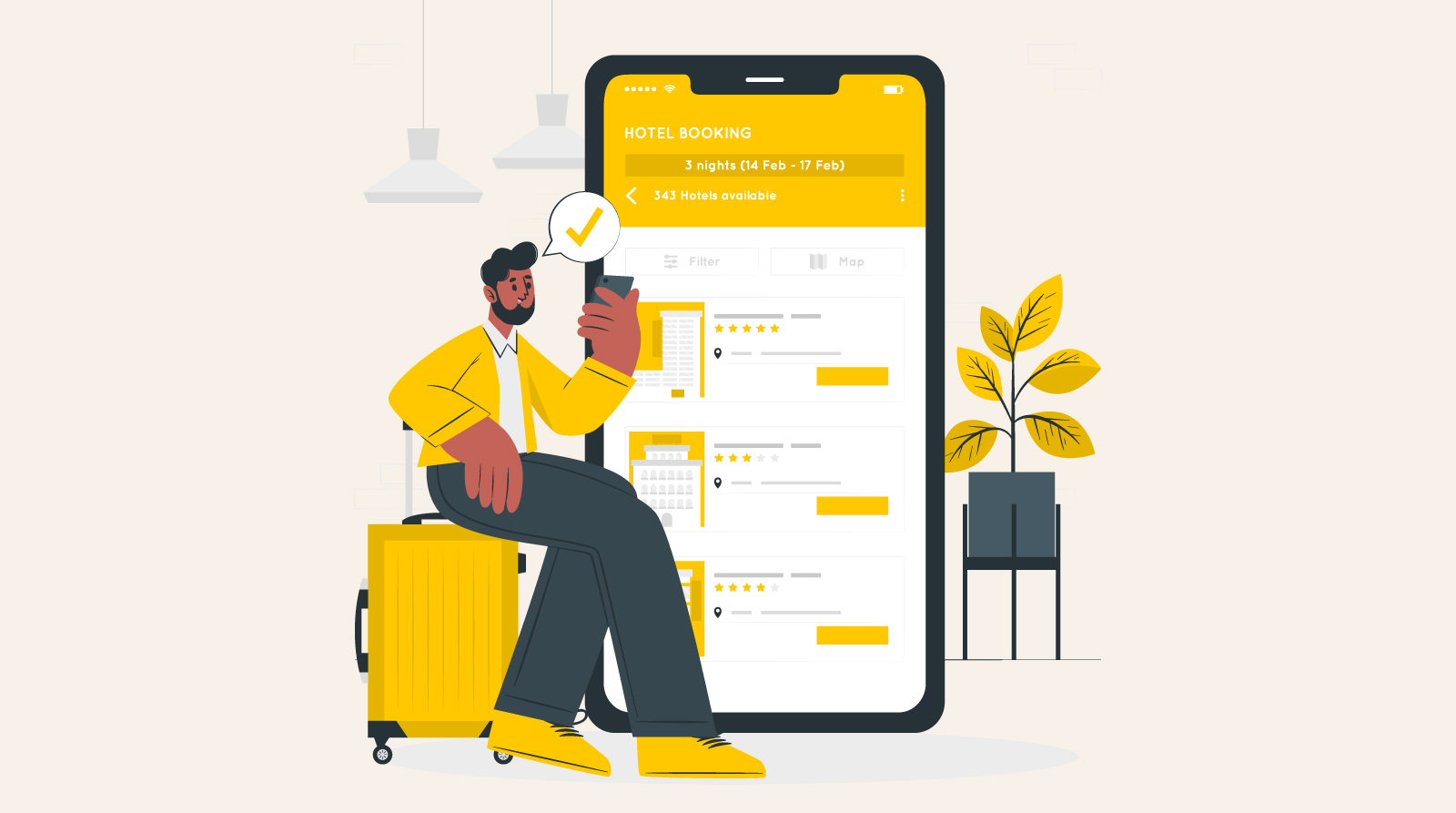
Why Do Hotels Need a Website?
1. Your Hotel’s Signature Online
A website says a lot about any business, and for hotels, it’s no different.
In today’s world, most guests will first discover your hotel online, so your website is their first chance to get to know you.
It’s your moment to make a great impression and show them what your hotel is all about—before they even step through the door.
The main job of a hospitality website is to give visitors a feel for your hotel, especially those who have never been there before.
Whether it’s through engaging content, beautiful images, or even virtual tours, your website should help guests imagine the vibe and atmosphere they’ll experience when they stay.
2. Central Hub for Info & Communication
Your hotel’s website isn’t just a pretty face—it’s where the conversation happens.
Sure, guests can fill out a contact form, grab your email address, or pick up the phone, but your site should offer even more ways to connect.
Integrating reservation tools like live chat, inquiry widgets, or a simple booking calendar means guests can reach out or lock in dates without ever leaving the page.
On the flip side, your website is where you share everything people want to know about your hotel.
From detailed room descriptions and amenity lists to blog posts, press releases, and local guides, you control the story.
When you pair that with virtual tours, visitors can explore your spaces and get instant answers—no phone tag required.
3. Boosting Direct Bookings
Your website is like a 24/7 concierge with a golden key to your hotel’s doors.
Guests often wander in from OTAs, peek around, then slip away—unless your site rolls out the red carpet.
That’s where your reservation tools come in: Sleek booking calendars, one‑click “Book Now” buttons, or pop‑up deals that feel like a personal invite.
Next, sprinkle in a dash of magic with virtual tours.
Let visitors wander through your lobby, lounge, and suites as if they’re there.
Once they’ve fallen in love with the view from your rooftop bar or the cozy corner nook, the urge to lock in dates becomes irresistible.
With an integrated booking engine powering these features, the path from “browse” to “book” is as smooth as silk.
No more bouncing between sites or wrestling with clunky widgets—the moment inspiration strikes, guests can seal the deal right on your page.
What Are the Essential Hotel Site Features?
1. Mobile-Responsive Layout
No one likes to pinch and zoom, swipe and squint through a website that refuses to fit their screen.
With the internet growing by over 7 percent each year—that’s about 875,000 new users daily—and 92 percent of them on mobile, your hotel’s site must adapt to every device.
Responsive design means text automatically resizes for easy reading, images are optimized for fast, crisp loading, and menus tuck into a clean “hamburger” icon on smaller screens.
Try dragging your browser window wider and narrower—you’ll see content flow and rearrange itself smoothly.
2. Clear Calls to Action
Say a visitor lands on your site, excited to book their stay, but they can’t find where to click next.
Frustrating, right?
That’s why your calls to action (CTAs) need to be crystal clear and impossible to miss:
Make Buttons Pop: Whether it’s “Book Now” or “Check Availability,” your CTAs should be large and easy to tap, especially on mobile. Think of them as your digital “red carpet,” welcoming guests to take the next step.
Stand out with Contrast: Use bold, high-contrast colors to make your CTAs impossible to ignore. The brighter the button, the easier it is for guests to find their way to the booking page or virtual tours.
Keep it Simple: Nobody wants to fill out a long, complicated form. Keep things easy by asking for only the essential details—dates, room type, and contact info—so booking feels quick and effortless.
Use Strong, Action-driven Words: Instead of “Submit,” go for “Reserve Now” or “Claim Your Spot”—words that push people to act. A little urgency goes a long way, especially when you’re running a special or limited-time offer.
Test Across Devices: A perfectly laid-out CTA on a desktop might be a nightmare on mobile. Test your CTAs across all screen sizes to make sure they’re clear, clickable, and lead straight to your reservation tools.
3. Stunning Visual Content
Lights, camera, wow—your hotel’s story unfolds through its photos and videos.
Think of each image as a window that invites guests to step inside your world, even before they arrive.
Studies back it up: A massive 92 percent of all travelers insist on seeing photos of their room before booking—57 percent call those images very important.
To make every shot count, focus on quality and variety:
Hero Shots: Showcase your front exterior at dawn, dusk, and under twinkling night lights—each angle telling a different mood.
Lobby & Lounge: Capture the buzz of arrival with and without staff, so guests can imagine themselves walking in.
Room Tours: For every room type, get one sweeping shot of the full space plus close‑ups of the view, workspace, bedside details, and bathrooms.
Dining & Drinks: Tempt taste buds with wide-angle views of F&B outlets and mouth‑watering close‑ups of signature dishes.
Amenities: From spa sanctuaries and fitness centers to rooftop pools (bonus points for drone shots!), highlight what makes your property unique.
Events & Celebrations: Styled wedding and meeting shots—perhaps with models—help guests picture their special moments in your space.
And don’t stop at stills.
Sprinkle in virtual tours and short video clips of your signature experiences—morning coffee on the terrace, laughter echoing in the banquet hall, the serene splash of poolside relaxation.
4. Showcasing Activities & Experiences
A hotel isn’t just somewhere to sleep—it’s about the memories you make while you’re there.
Sure, the room is important, but what sticks with guests is the experiences they have during their stay.
That’s why your hotel website should show off more than just your comfy beds—it should highlight the fun, exciting, and unique experiences waiting for them.
Did you know that 67% of high-income travelers would rather spend extra money on activities than on a fancier room?
A Skift study found that.
So why not give them what they want?
You can stand out by offering tours, cultural experiences, or adventure packages that guests can book directly through your reservation tools.
Cities like Dubai and Las Vegas are doing this already, offering custom experiences right alongside room bookings.
It makes planning the whole trip so much easier for guests.
But don’t worry if you’re not offering big excursions just yet—adding a little local flavor can still make a huge difference.
You can create blog posts or lists of the best activities in the area, from hidden gems to must-see attractions.
This helps guests plan their perfect trip, even if you’re not offering the activities yourself.
5. Fast Loading Performance
We all know the feeling—waiting for a website to load and feeling like it’s taking forever.
Well, your hotel guests feel the same way.
When it comes to hotel websites, speed matters.
Not only do search engines like Google use load time as a ranking factor, but the longer your site takes to load, the more likely guests will hit the back button and look elsewhere.
According to Google, 53% of people will abandon a website if it takes more than 3 seconds to load.
That’s a huge number, and it shows just how crucial fast loading times are for keeping visitors engaged.
So, don’t just throw together a site and hope it works.
You need to put time and effort into optimizing your website to load quickly on all devices.
6. Detailed Room & Amenity Details
Say a guest visiting your website, ready to book their dream stay.
What’s going to make them hit “book now”?
Detailed, irresistible information about your rooms and amenities!
This isn’t just about listing a bed and a bathroom—it’s about painting a picture of what their experience could be.
Think beyond the basics: Describe the vibe of each room, the cozy touches, and the views they’ll wake up to.
Don’t forget to share any special perks, like accessibility features or your pet-friendly policy.
You never know, that could be the dealbreaker that turns a browser into a guest.
A study says that 45% of UK travelers place detailed room information at the top of their decision-making checklist.
So, take full advantage of this—whether you’re offering a sleek penthouse suite with panoramic views or a budget-friendly room with all the essentials, ensure to highlight the unique features.
And let’s not forget your top amenities.
Guests want to know about everything that could make their stay special.
A swimming pool, a spacious wedding banquet hall, or a well-equipped meeting room could be the deciding factors.
76% of travelers agree that amenities play a major role in their booking process, so show them off proudly!
The magic happens when you pair all this information with SEO and paid search ads, targeting travelers who are looking for just what you offer.
7. Local Insights & Blog
A hotel stay doesn’t start at check-in—it starts with curiosity.
Where should I go? What should I eat? How do I make this trip unforgettable?
That’s where your blog steps in, not as a sales pitch, but as a storyteller, a tour guide, and a local bestie rolled into one.
Say your hotel blog is a digital concierge desk.
Instead of boring listicles, you’re giving travelers behind-the-scenes access to the soul of your city.
Share secret sunset spots, cozy cafés locals swear by, the quirkiest festivals, or the best routes for a morning jog with a view.
You're not just helping guests plan their trip—you’re making them feel something before they even pack their bags.
But don’t stop with leisure travelers—event planners and corporate clients are curious too.
Want to book that big retreat or wedding weekend?
Use your blog to show off your spaces, offer inspiration, and drop tips they’ll thank you for.
And here's the kicker: Google loves a good story just as much as humans do.
Blogging keeps your website fresh and searchable.
Every time you post a guide or travel tip, you're giving search engines (and people!) more reasons to find you.
Want to level up?
Add a page for press releases and updates—announce your next in-house restaurant or seasonal event.
Create a local attractions guide—not just where to go, but why it matters. Add personal touches. Tell a story.
As branding expert David Brier once said:
“If you don’t give the market the story to talk about, they’ll define your brand’s story for you.”
So, why wait?
Start telling your hotel’s story. Start showing guests not just what you offer, but who you are.
Because anyone can book a room—but only a few get to feel like they’ve found a second home... or maybe even a hidden part of themselves.
8. Eco-Friendly Initiatives
Today’s travelers aren’t just packing their bags—they’re packing their values.
More and more guests are searching for stays that align with their lifestyle, and sustainability is high on that list.
68% of UK travelers say they’d rather stay somewhere that’s eco-friendly.
That’s not a trend—it’s a shift.
So, if your hotel is doing its part for the planet, don’t keep it a secret.
Flaunt it!
Whether you’re swapping out plastic toiletries for refillable glass, installing energy-efficient lighting, cutting down food waste, or earning green certifications, put it all on your website where guests can see the impact.
Add a dedicated sustainability page.
Use icons to highlight your green features.
Share stories of how you’re giving back to the community or protecting the local environment.
And here’s the thing: People don’t just want to sleep in a comfortable bed—they want to feel good about it.
Your website is the perfect place to show guests that booking with you means supporting a hotel that cares about more than just profits.
It means supporting a hotel that respects the planet, the people, and the future.
Plus, it sets you apart.
In a sea of “luxury linens” and “rooftop pools,” eco-friendly values speak louder than buzzwords.
And they resonate with a growing audience that wants their travel to leave memories, not carbon footprints.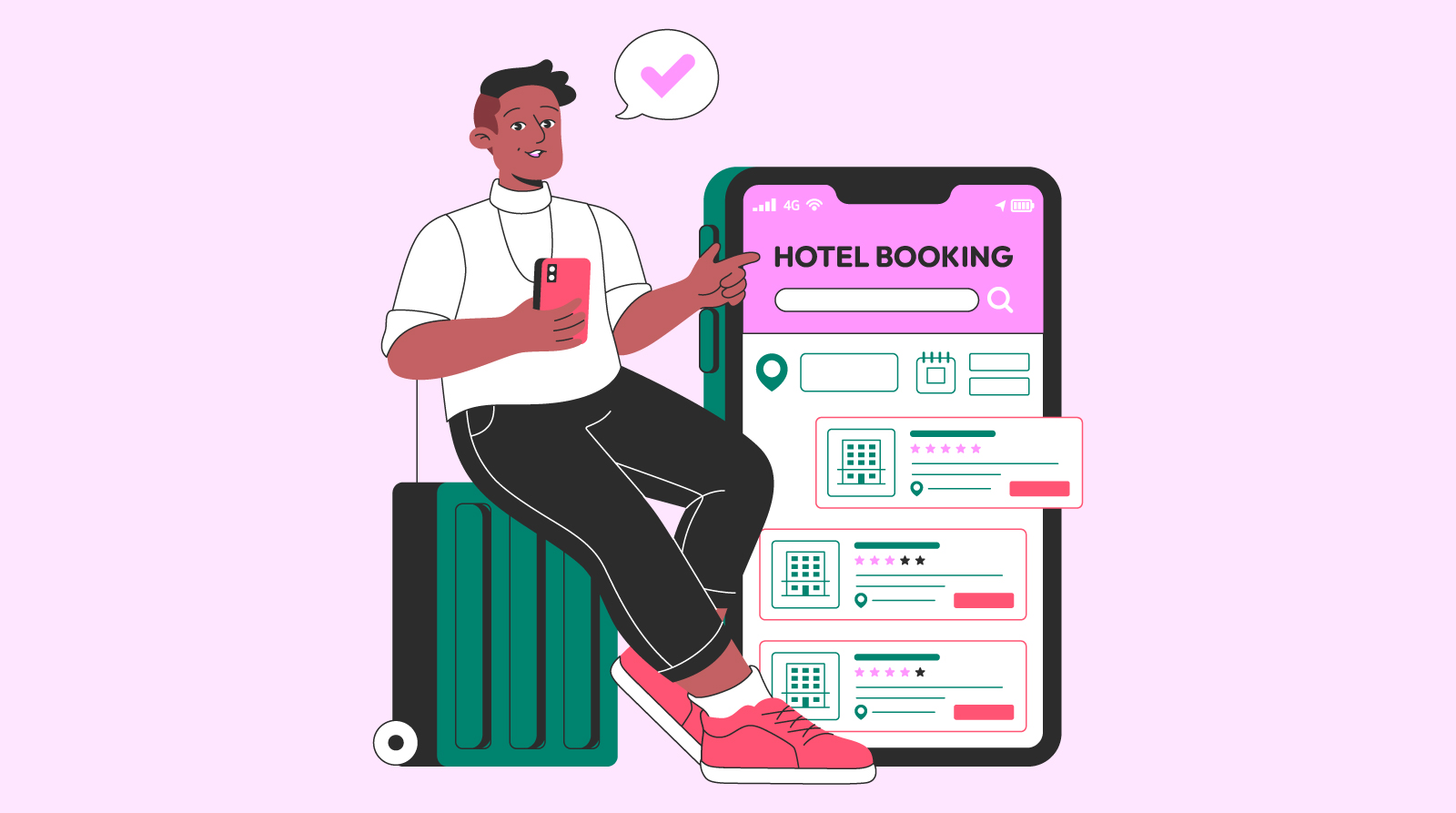
9. Community Engagement Efforts
Let’s be real—today’s guests care just as much about where their money goes as they do about where they lay their heads at night.
It’s not just about the room or the view anymore—it’s about values.
And 89% of UK consumers say they’re more likely to support a brand that gives back. That’s a powerful stat you can’t afford to ignore.
So if your hotel is out there doing good—supporting local charities, uplifting neighborhoods, funding education, planting trees, or partnering with local artisans—don’t be shy.
Show it off!
Create a section on your website dedicated to your social impact.
Share real stories, showcase the faces behind the causes, and give guests a peek into how their stay helps create positive ripples in the community.
Maybe your towels are locally woven.
Maybe 5% of your revenue supports school programs.
Maybe your staff volunteers at the nearby shelter.
Whatever it is—it matters!
And for socially conscious travelers, it could be the reason they choose your hotel over another.
Plus, this kind of transparency builds trust.
It tells your guests: “We’re not just here to make a profit—we’re here to make a difference.”
And here’s the bonus?
People talk about brands that give back.
Whether it’s through word-of-mouth or a glowing online review, doing good often comes back around in the best ways.
10. Guest Testimonials & Reviews
Let’s face it—we all check the reviews before booking a hotel.
Whether we admit it or not, we trust other people’s experiences more than anything a brand says about itself.
That’s the magic of social proof.
In simple terms, social proof means: “If it worked for others, it’ll probably work for me too.”
And get this—96% of travelers say online reviews are super important when choosing a hotel.
That’s almost everyone!
So, don’t just tell visitors how great your hotel is—show them through the words of real guests.
Sprinkle in testimonials across your homepage, room pages, and booking sections.
Highlight reviews from trusted sources like TripAdvisor, Google, or Booking.com, so it feels legit.
Want to take it up a notch?
Add a live feed of user-generated content from Instagram or Facebook.
Let your guests do the marketing for you!
A happy family photo at breakfast, a honeymoon selfie on the balcony, a glowing sunset shot from your rooftop—these moments speak volumes.
And here's an important tip: don’t be afraid to include some honest, less-than-perfect reviews, as long as you’ve responded professionally.
It shows you care, you're human, and you’re listening.
Guests don’t expect perfection, but they do expect transparency.
11. Consistent Brand Presence
Your hotel’s branding is like the soothing scent that greets guests the moment they step into your lobby—it immediately tells them they’re in the right place.
Online, consistent brand presence does the same: it reassures visitors that your site, from the URL in their address bar to the final “Confirm Booking” click, is secure, polished, and truly yours.
Online travel giants like Booking.com and Expedia have built their empires on this very trust.
Every page feels familiar: same logo, colors, fonts, and tone.
To compete, your hotel needs that same harmonious rhythm.
Start with a professional domain name—no, myawesomehotel27.freewebsitebuilder.com mishaps—and carry that elegance through every element of your site.
Visual Harmony: Use your logo, color palette, and typography consistently on banners, room galleries, and even within your virtual tours. When a guest clicks through a 360º tour of your penthouse suite, the branding cues—colors, icons, button styles—should echo what they saw on the homepage.
Tone of Voice: Whether you’re prompting guests to “Reserve Now” with your reservation tools or guiding them through a blog post, keep your language on-brand. Luxury travelers expect calm, refined copy; adventure seekers want playful, energetic phrasing. Pick one voice and let it carry across every headline, button label, and photo caption.
Seamless UX: Consistency isn’t just cosmetic. Your booking engine, FAQ pages, and contact forms should all feel like part of the same experience. That means uniform button shapes, hover effects, and micro‑interactions so guests never question if they’ve wandered off-site.
12. Integrated Booking Engine
Imagine this: a traveler finds your hotel online.
They’re loving the vibe, scrolling through stunning virtual tours, eyeing the plush beds, and getting excited about that rooftop pool.
And then... the booking process hits a wall. No clear button. A clunky redirect.
A confusing interface.
Just like that, they’re gone!
Let’s not let that happen.
When it comes to hospitality website features, a sleek, integrated booking engine is your ultimate closer—the handshake, the signed deal, the “we can’t wait to welcome you” moment.
It’s not just about adding a “Book Now” button and calling it a day.
The booking engine needs to live and breathe with the rest of your site.
It should feel like a natural extension of your brand, not a glitch in the matrix.
The layout should be clean, responsive, and built to perform just as smoothly on a phone as it does on a laptop.
Because let’s face it—your future guests are booking while waiting in line for coffee, not sitting at a desk.
Also, that little reservation tool?
It better play nice with your hotel’s property management system (PMS).
Real-time rates, updated availability, and instant confirmations—no delays, no double-bookings, no confusion.
And don’t overthink the button color.
There’s no secret shade of blue or red that magically boosts bookings.
What matters is contrast, clarity, and consistency.
Make it bold. Make it visible. Make it irresistible.
13. Effective Lead Magnets
We can think of lead magnets as the welcome cocktail you hand out at check‑in—it’s a small, irresistible gift that gets guests to share their details so you can keep the conversation going.
In the digital world, these “cocktails” come in many flavors:
eBooks & Guides: Offer a beautifully designed “Insider’s Guide to [Your City]” or “Top 10 Hidden Gems Around Our Hotel.”
Newsletters: Promise insider tips, seasonal deals, or local stories straight to their inbox—no spam, just good stuff.
Free Trials & Vouchers: Tempt visitors with a complimentary spa pass, a drink at the rooftop bar, or an extra hour in your virtual tours before they even arrive.
Here’s the magic: even if someone leaves without booking, you’ve got a way to reach back out.
Use your reservation tools to weave signup forms seamlessly into the booking process (“Want 10% off your first stay? Enter your email!”).
Then nurture these leads with targeted emails—celebrate their birthday, highlight upcoming events, or showcase new hospitality website features.
14. Secure Payment Processing
Nobody wants to worry about their credit card details, especially when they’re excited to book a getaway.
That’s why secure payment processing is one of the non‑negotiable hospitality website features you need.
Here’s how to keep things simple and safe:
Lock It down with HTTPS & SSL: Think of HTTPS as the digital equivalent of a hotel doorman checking IDs. An SSL certificate ensures every bit of data shared on your site—names, card numbers, you name it—is wrapped up in encryption so nobody else can peek.
Pick a Trusted Web Host: Your hosting provider should be like a top‑tier security guard, blocking cyberattacks and keeping your site running smoothly.
Keep Permissions Tight: Only give back‑end access to people who need it. Limiting who can log in and what they can see cuts down the risk of a data breach.
Throttle Login Attempts: If someone tries to guess a password over and over, lock them out after a few wrong tries. It’s a quick way to stop hackers in their tracks.
Ditch Default Settings: Most website platforms come with out‑of‑the‑box settings that hackers know inside out. Change usernames, tweak admin paths—make your site less predictable.
Back Up Regularly: Think of backups like fire drills. If something goes wrong, you’ll have a fresh copy ready to go, so you’re never scrambling.
On the booking side, use reservation tools that connect to secure payment gateways—PayPal, Stripe, or Braintree are all PCI DSS‑compliant, meaning they follow strict rules to protect card data.
And here’s a reality check: 74% of UK travelers say they worry about their info when booking hotels online (Statista).
15. Analytics & Tracking Pixels
You can’t know what to upgrade if you’re flying blind.
That’s where analytics and tracking pixels come in—they’re the backstage hands gathering the insights you need to fine‑tune every corner of your site.
Start with Google Analytics (it’s free!).
Just create an account, copy the tiny snippet of code, and paste it into your website’s header.
Instantly, you’ll see where visitors come from, which pages they love (like your virtual tours), and where they bail before hitting your reservation tools.
Next, add a Facebook pixel.
It works the same way—copy, paste, and you can start building laser‑focused ads: Reach out to folks who peeked at your pool gallery but didn’t book, or offer a spa deal to those who lingered on your amenities page.
Want more?
Consider tools like Open Web Analytics or Spring Metrics for open‑source tracking, or Kissmetrics for deep‑dive behavior analysis.
All are easier to set up than you’d think, especially if your web designer is on board.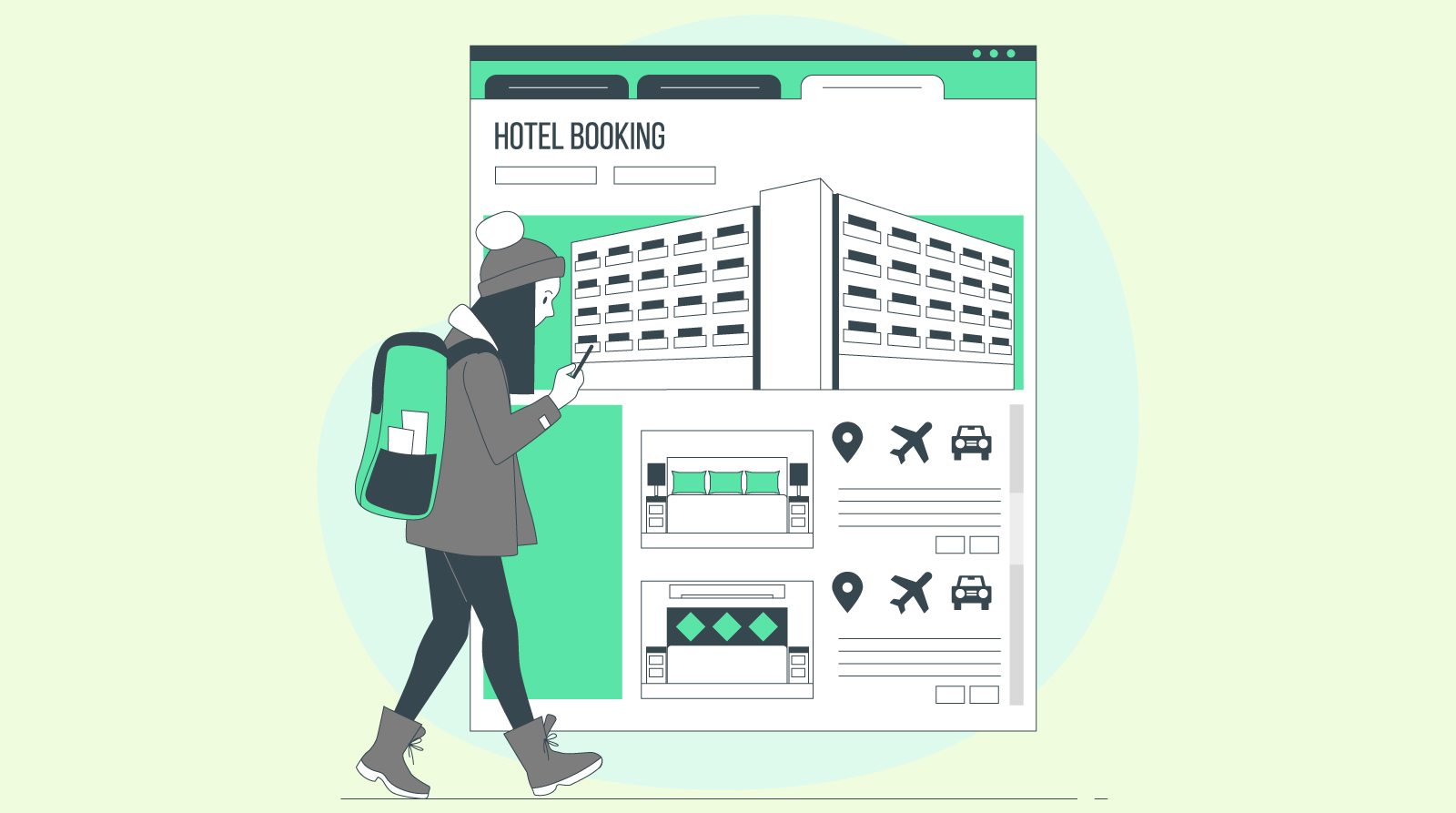
16. Interactive Rate Comparison
Ever been stuck scrolling through hotel room options, trying to figure out which one gives the best bang for your buck?
Your guests feel the same way.
That’s why one of the most underrated yet powerful hospitality website features is an interactive rate comparison tool.
This tool lets visitors quickly line up different room types side by side—comparing rates, amenities, bed sizes, views, and extras like complimentary breakfast or spa access.
Think of it as the ultimate cheat sheet for decision-making.
Whether it’s a cozy suite with a city view or a deluxe room with a jacuzzi, your guests should see everything clearly in one place.
Sure, you could use a simple table layout if you’re tight on budget or dev time—but if you really want to impress, go interactive.
Let users filter based on what matters to them: price, amenities, room size, or even perks shown in your virtual tours.
Want to really nudge that booking?
Add automatic promo code application or display exclusive discounts for direct bookings right inside the tool.
That tiny detail could be the difference between a guest choosing your reservation tools or hopping back to another website.
17. Built‑in SEO Optimization
You could have the flashiest hotel website in town—think virtual tours that feel like a movie trailer and smooth-as-butter reservation tools—but if no one can find it on Google?
It's like having a five-star resort hidden in the jungle.
That’s why SEO optimization is one of those behind-the-scenes hospitality website features you absolutely can’t ignore.
Let’s say you run a charming boutique lodge in Marrakech or a mountain-view cabin in Colorado.
You want travelers searching “authentic stays in Marrakech” or “cozy cabins in Colorado” to find you, not some massive booking platform eating up all the traffic.
Here’s what to make sure is baked into your site’s CMS (content management system):
Page URL (Slug): Instead of something like yourhotel.com/page-99, go with yourhotel.com/mountain-view-suite. Clean, keyword-rich, and descriptive.
Page Title: This is what shows in search results—make it crystal clear, like “Luxury Suite with Hot Tub | Valley Escape Lodge.”
Meta Description: A short, punchy line that tells people why they should click: “Wake up to panoramic views and book direct for best rates.”
Tools like Yoast SEO on WordPress act like a checklist, ensuring your page ticks all the right boxes without needing to be an expert.
And if you’re more focused on running the show than decoding algorithms? Partner with an SEO specialist.
FAQs
What Are the Features of the Hospitality Industry?
The hospitality industry thrives on service, comfort, and guest satisfaction. It includes personalized experiences, cleanliness, convenience, and strong customer relationships.
What Should a Hotel Website Have?
A hotel website should include hospitality website features like reservation tools, virtual tours, mobile responsiveness, secure booking, and SEO optimization. These turn visitors into loyal guests.
What Are the 5 P’s of Hospitality?
The 5 P’s stand for Product, Price, Place, Promotion, and People. Together, they shape how a hotel markets itself and delivers guest experiences.
What Are the 5 C’s of Hospitality?
The 5 C’s are Competence, Character, Commitment, Communication, and Collaboration. They reflect the core values that drive great service in hospitality.
Final Thoughts
As promised, we’ve covered the most essential hospitality website features—from seamless reservation tools to engaging virtual tours—that turn casual visitors into confident bookers.
But here’s the key takeaway: don’t just copy trends.
Build features that align with your brand, your guests, and your booking goals.
A beautiful site means nothing if it doesn’t convert.
Focus on usability, trust, and storytelling to make every click count.
Need help building or refining your hotel website?
Reach out—we’d be happy to guide you through it.






